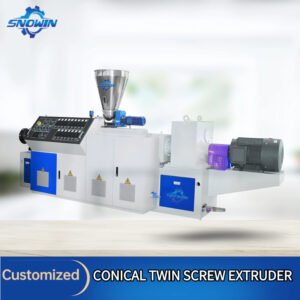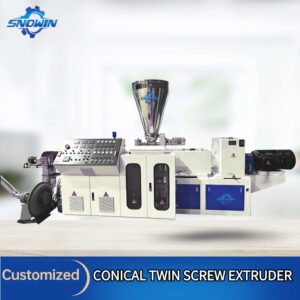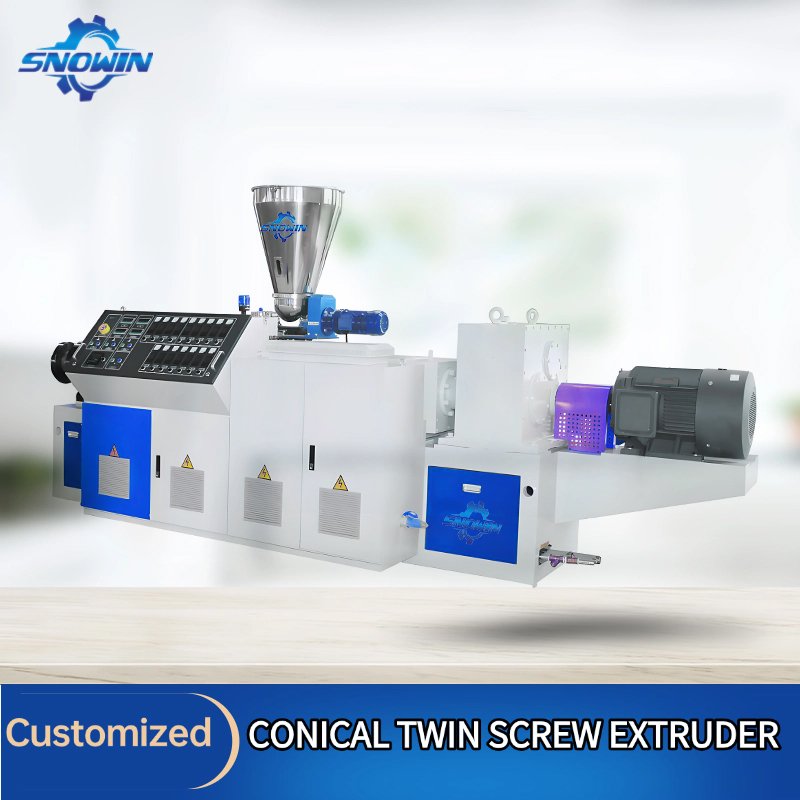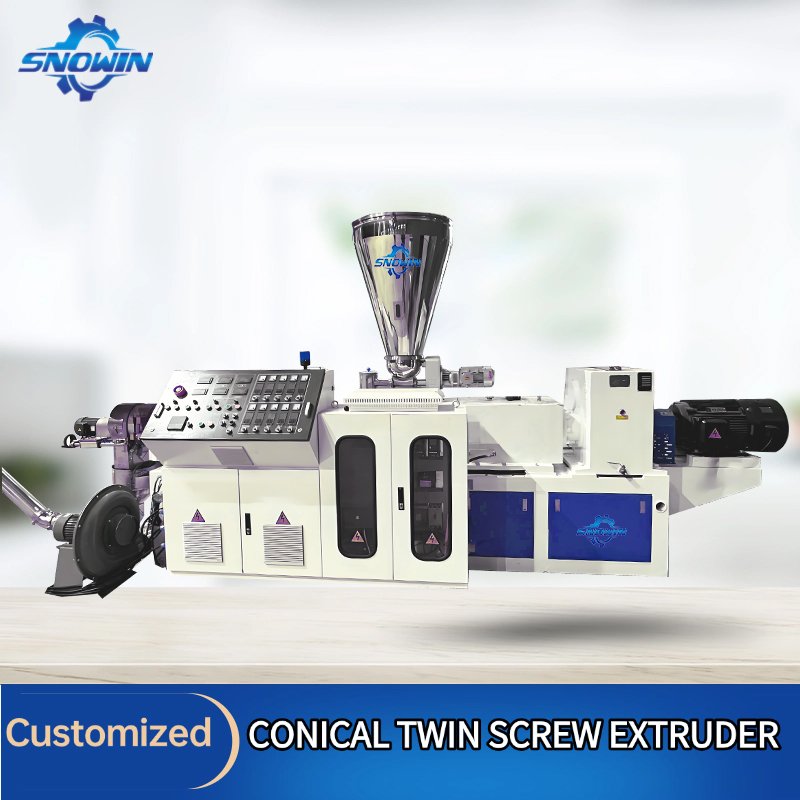CONICAL TWIN SCREW EXTRUDER
Counter-rotating conical twin screw extruders offer irreplaceable advantages in applications requiring forced feeding, high compression, efficient venting/devolatilization, gentle processing of heat-sensitive materials, and high-filler dispersion. They are the mainstream and highly efficient choice for PVC processing and high-filler composite pelletizing, among other fields.
Their counter-rotating, positive conveying characteristics result in exceptionally high conveying efficiency. They excel particularly at handling powders, recyclates, or fiber-reinforced materials that have low bulk density, are loose, or are difficult to feed. Feeding is more stable and less prone to slippage. They possess strong and stable pressure-building capabilities and are insensitive to fluctuations in die pressure, leading to more uniform pelletization. The massive inherent compression ratio powerfully compacts the material, effectively removing entrained air and volatiles (moisture, solvents, low molecular weight compounds, etc.). The conical design combined with multi-barrel sections makes it exceptionally easy and effective to set up high-efficiency venting zones, making them particularly suitable for materials requiring good devolatilization (e.g., wet wood flour, solvent-containing materials, polymers with high volatile content). They are especially well-suited for processing shear-sensitive, thermally unstable materials (PVC being the prime example), effectively reducing the risk of material degradation due to overheating. The conical design means the feed end (large diameter) can withstand significantly higher torque, while the discharge end (small diameter) requires relatively less torque. This structure allows the equipment to be designed with a very high specific torque, enabling it to process high-viscosity melts or high-resistance formulations. Powerful compression, controlled shear, and good heat transfer work together to ensure materials (even difficult-to-plasticize powders) receive thorough and uniform plasticization.
Application Areas:
- PVC Processing: The absolute dominant field. Especially for direct extrusion of PVC powder into pellets (for pipes, profiles), PVC cable compounds, PVC flooring pellets, etc. Processing heat-sensitive PVC is its core strength.
- Wood-Plastic Composites (WPC): Strong compaction, venting, plasticization, and dispersion of highly filled wood flour (which may have high moisture content).
- High-Filler Formulations: Materials requiring substantial filling with calcium carbonate, talc, glass fiber, etc.
- Thermoplastic Elastomers (TPE): Certain TPE formulations requiring good dispersion and avoidance of excessive shear.
- Materials Requiring Strong Devolatilization: Processing or recycling materials containing solvents, moisture, or other volatiles.
- Difficult-to-Feed Loose Materials: Powders with low bulk density, recycled flakes/fibers, etc.
| Model | Diameter (mm) |
Motor Power (kW) |
Capacity (kg/h) |
|---|---|---|---|
| SJC65 | 65/132 | 37 | 200-300 |
| SJC80 | 80/156 | 55 | 300-500 |
| SJC92 | 92/188 | 110 | 600-800 |
| SJC110 | 110/220 | 160 | 800-1300 |




